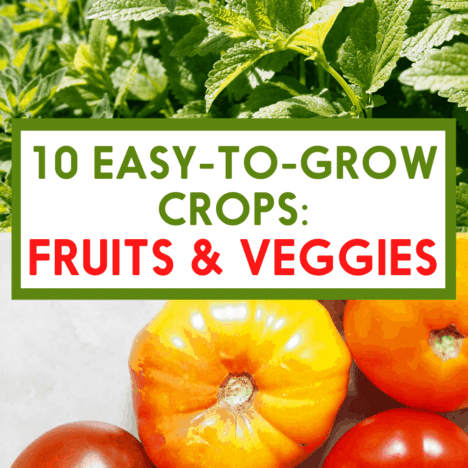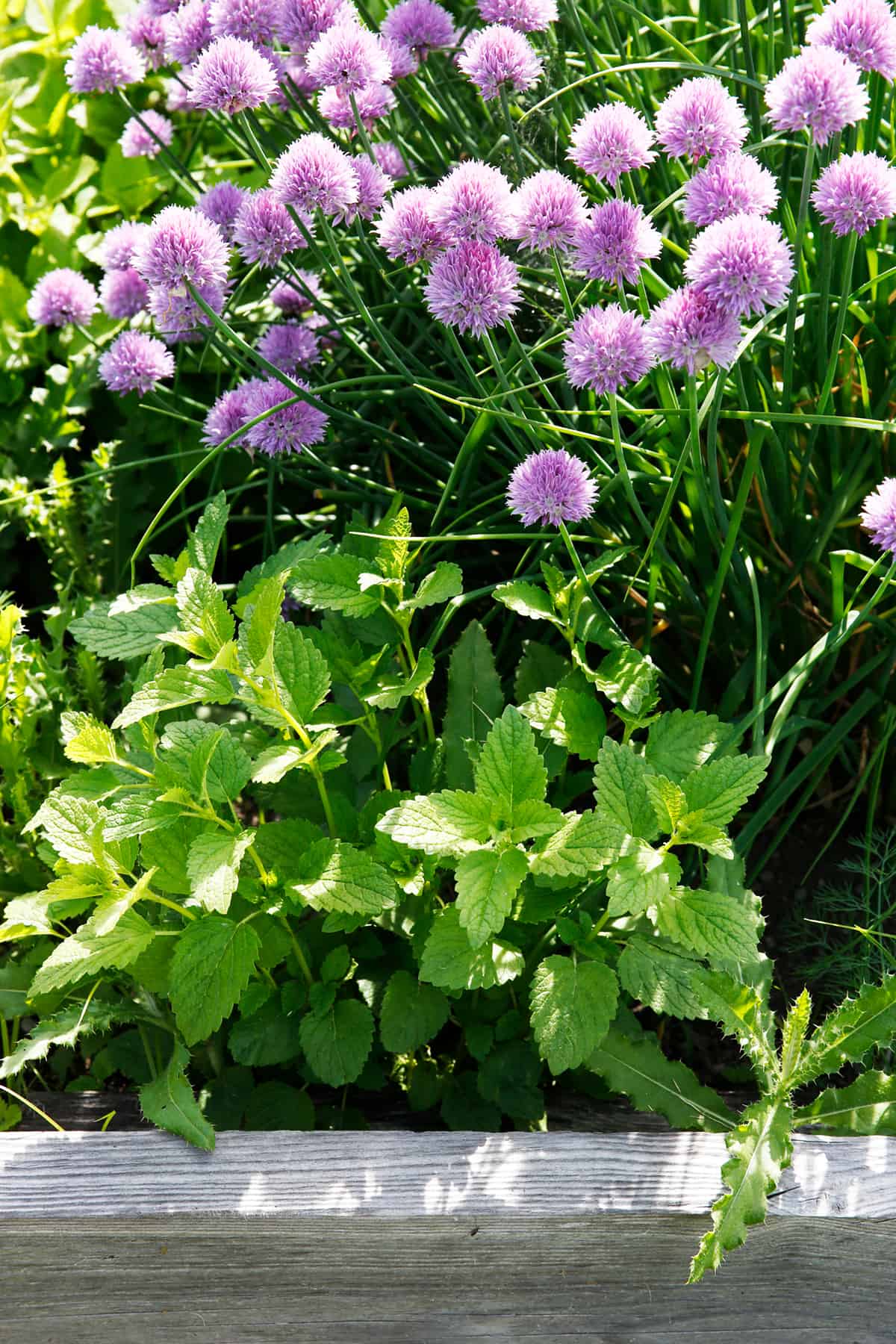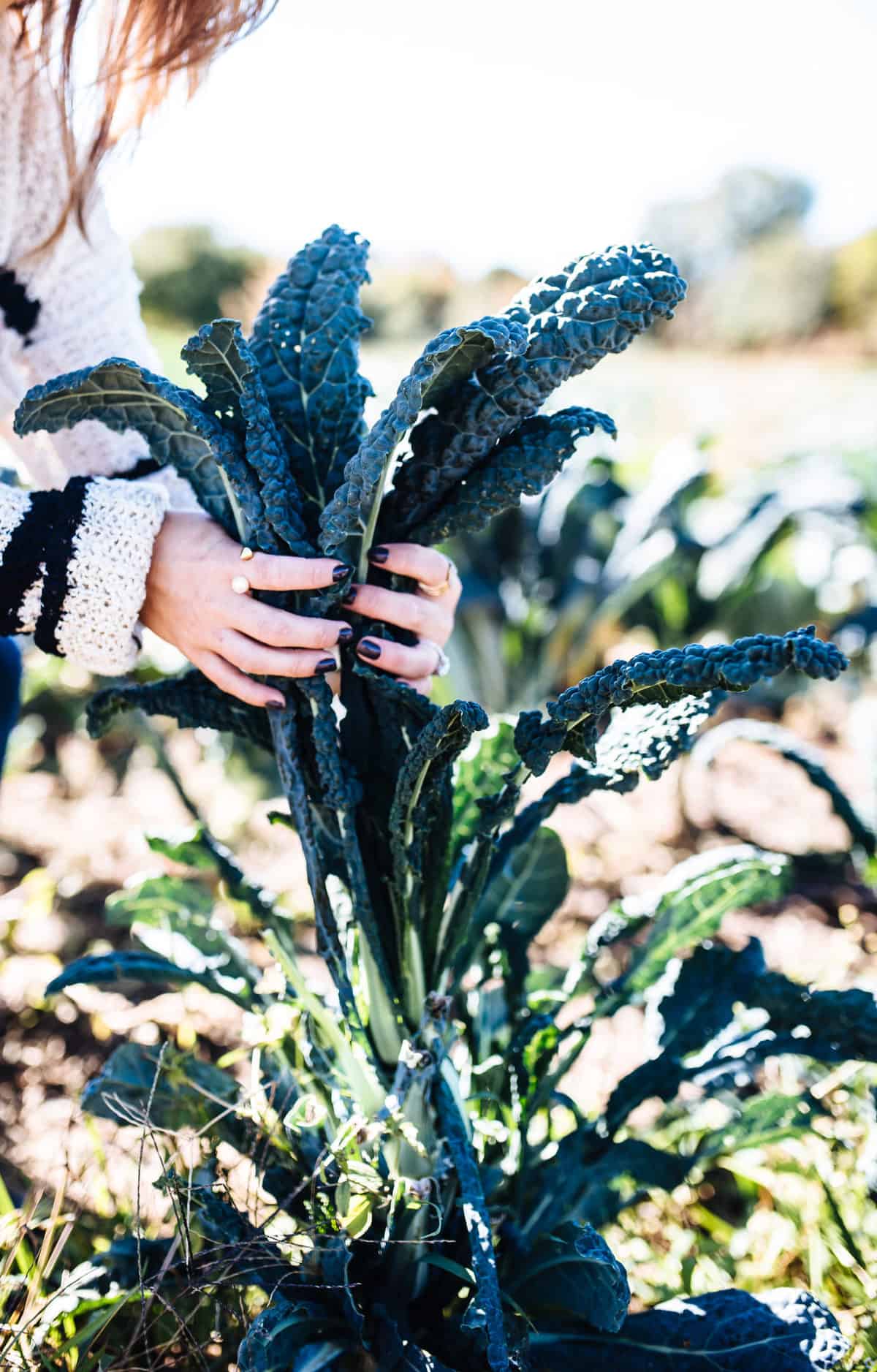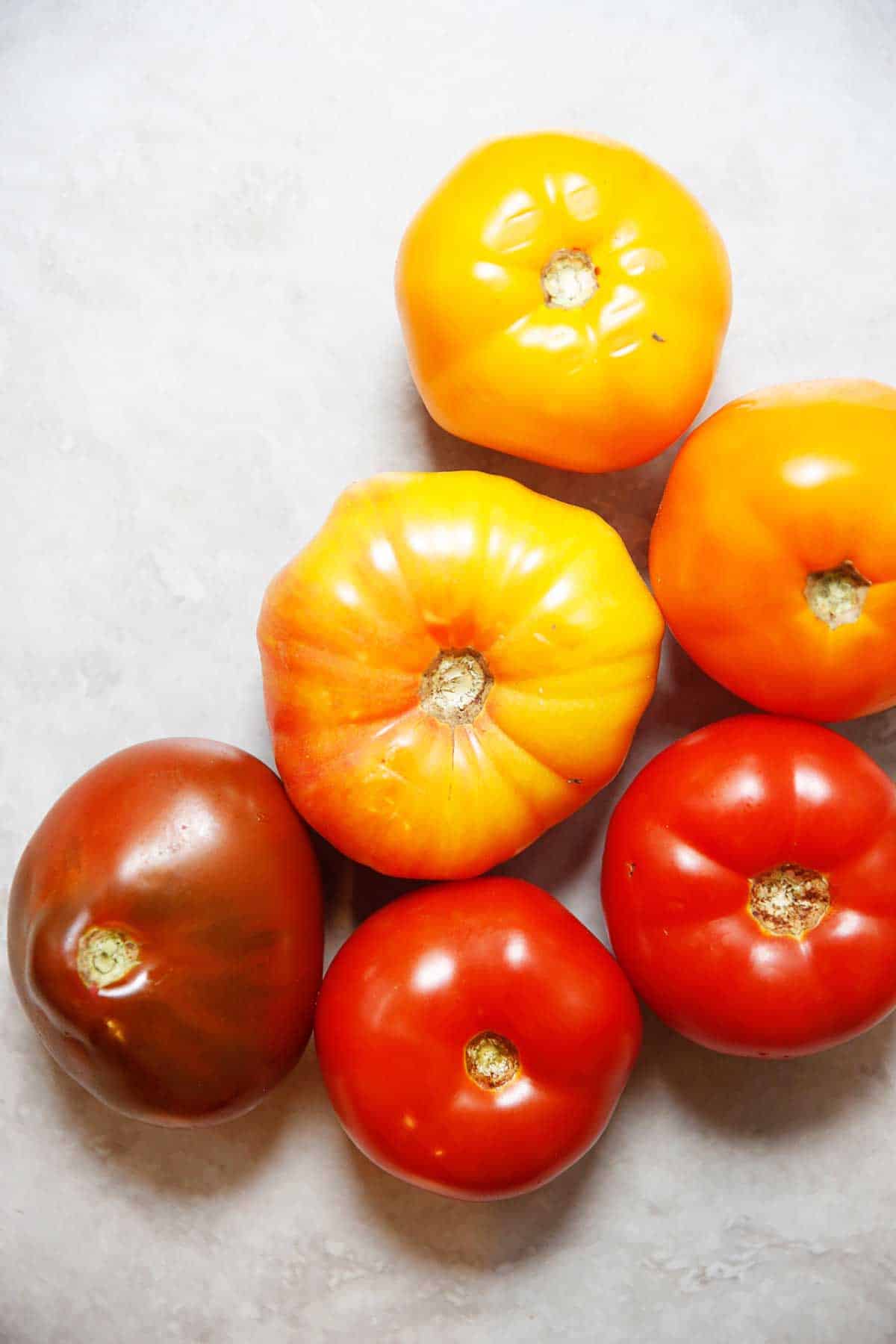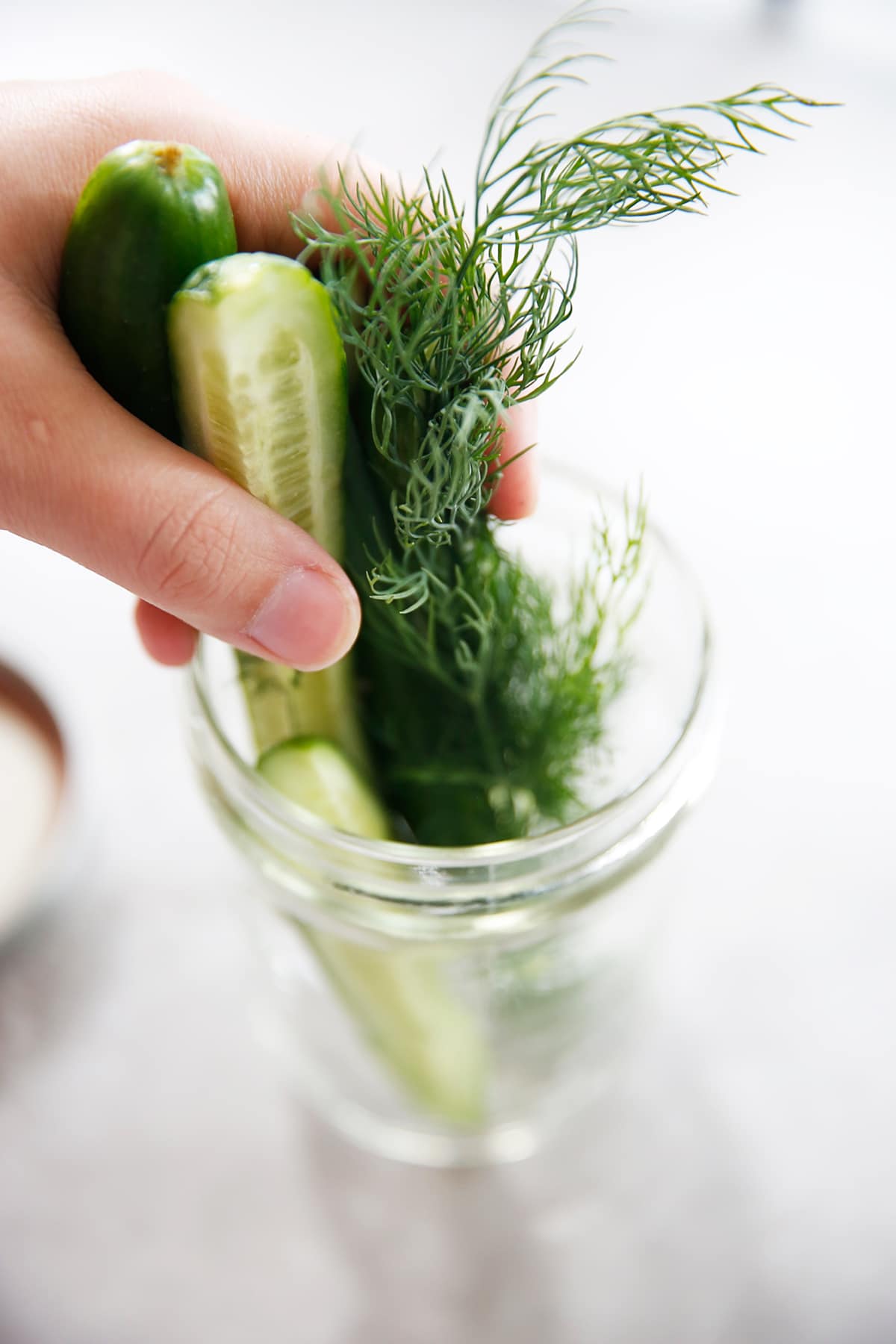This post may contain affiliate links. Please read my disclosure policy.
There have always been plenty of perks to growing a garden — but there might be even more advantages than ever right now. Gardening at home can be therapeutic, is a great hands-on activity to do with or without kids, and can (hopefully) result in some amazing tasting produce. We’re talking Gardening 101 over the next few weeks, and today’s post is all about the easiest fruit and vegetables to grow!
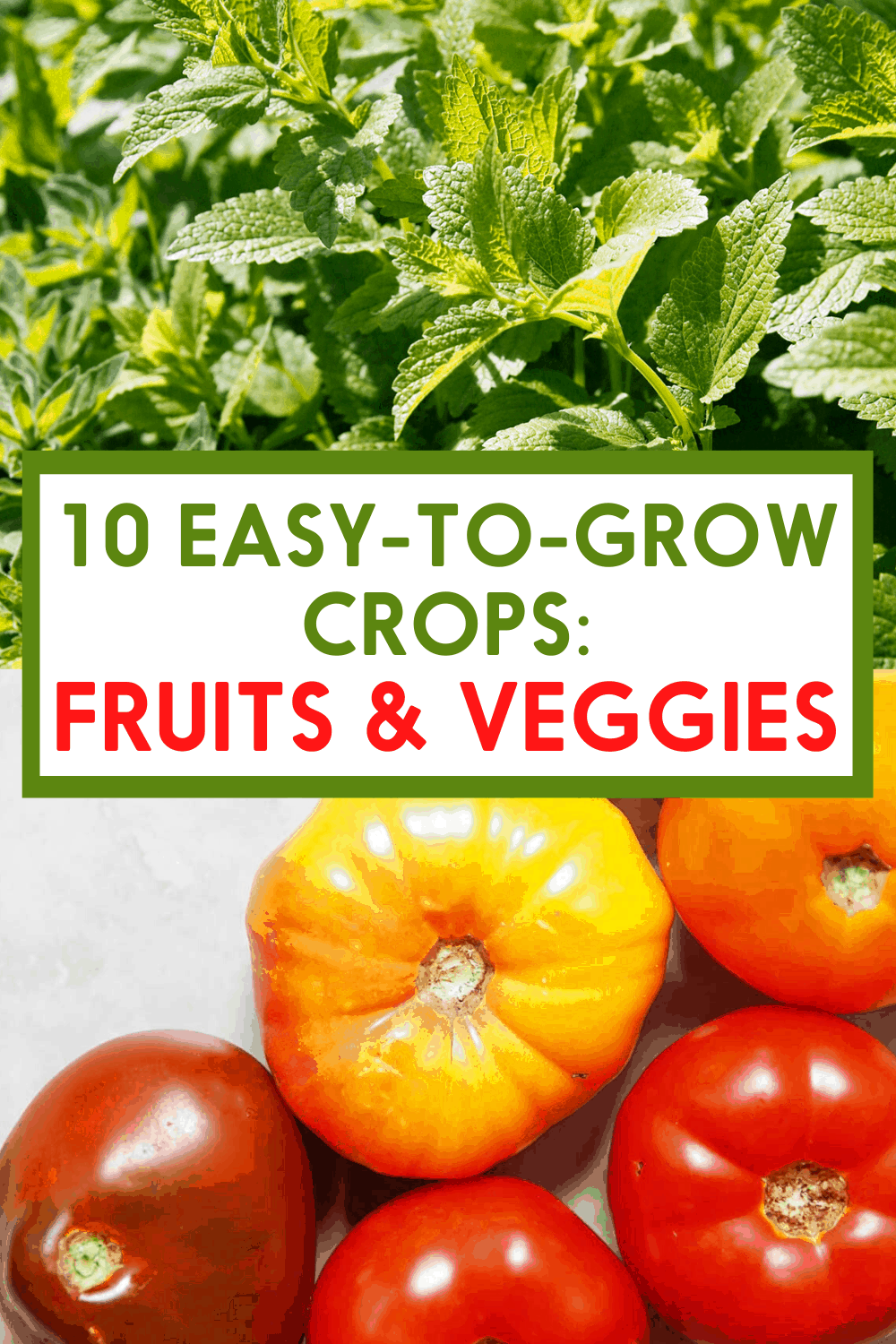 Easy Vegetables to Grow
Easy Vegetables to Grow
As a result of the social distancing, produce availability in stores is less consistent than usual and we’re being discouraged from grocery shopping more than absolutely necessary, so having easy access to fresh veggies on your own turf is a major perk.
Growing your own food crops also gets you out in the garden (which, according to the Rutgers School of Environmental and Biological Sciences, is a great way for adults to fight boredom and take care of their mental health) and can be a hands-on addition to any homeschooling curriculums you’re working on with your kiddos. And, if you’re able to purchase seeds from local nurseries and garden shops, you’re also supporting small businesses. I highly recommend calling around to those shops to see who might be offering curbside shopping.
If all of these benefits sound good to you, but you’re not sure how to get started, here are ten easy food crops to get you going!
(Don’t forget to check out last week’s Composting 101 post for more on how to improve your green thumb with food crops and more.)
1. Herbs
Are you a total newbie to the gardening world? Herbs are a great entry point. They’re just about the easiest thing you can grow and very difficult to mess up. Plus, you can grow them inside or outside based on what’s most doable for you. And you can mix and match what you put in your herb garden based on what you like best! Basil, thyme, mint, rosemary, sage, oregano…. they’re all easy to grow and will add a ton of flavor to your cooking.
While you can technically grow herbs outside or in indoor pots, Tasteful Garden does recommend planting them in the ground for best results. Plant them in full sun or in a spot with plenty of afternoon shade if you live in a place with super hot summers. Loosen the soil before planting to allow for lots of drainage and mix in some compost, too. After planting, check the soil often and water whenever the soil a few inches below the surface is dry to the touch.
If you’re opting to grow your herbs inside, put them in large containers in a sunny spot in your home. The other rules still apply!
And the bonus about herbs is that many are perennial plants, which means that each year they will grow back on their own. Look for the label on the plants as to whether or not the herb is annual or perennial. Some of the most commonly grown are Chives, Mint and Thyme.
Check out this post that discusses ways to Preserve Fresh Herbs and Freeze Fresh Herbs!
2. Lettuce
Lettuce is, of course, a staple of plenty of salads, but it’s way more versatile than that! Personally, I love using lettuce as a sandwich wrap or in recipes like my yummy smoky chicken salad lettuce boats. Lettuce is a key ingredient in many of my favorite easy summertime lunch go-tos, and with summertime (thankfully) just around the corner, I’m especially thrilled to share that lettuce is one of the easiest food crops you can add to your garden.
According to Morning Chores, leaf lettuce or head lettuces like Romaine and Iceberg can be easily grown at home. Seeds are easy to find at nurseries and hardware stores and tend to be very inexpensive. Lettuce can take cooler temperatures, so if you plant it in the early spring or fall, it can still thrive! Per Southern Exposure, you can pretty much grow it all year round. If you live in a climate that gets especially hot, just be sure to plant your lettuce in a shady area.
One of the other great things about lettuce is that it’s direct sown (AKA direct seeded), which means you start by planting seeds directly in the garden instead of buying small plants or starting the growing process inside and transplanting it later. Once you plant the seeds, you’re good to go!
You can prolong you lettuce by harvesting the individual leaves instead of removing the whole head of grown lettuce. Remove as many leaves as you plan to consume in that moment, and continue to water the plant. New leaves will grow in. You can continue to do this until the lettuce has “bolted” which means that the plant has grown tall and started to sprout seeds. Once it has bolted, remove the plant from the ground. If it isn’t too hot, you can start over and plant new seeds.
3. Green Beans
Like lettuce, you can start growing green beans in your DIY garden with seeds instead of preexisting plants. (Let’s review: this is called direct sowing.) See? This is already seeming pretty simple.
Certain varieties of green beans — half runners, for example — grow on a vine, which means they should be grown on a trellis for easier picking, Morning Chores says. Bush beans are another variety that don’t run along a vine or require a trellis. All green beans should be planted in well-drained soil with plenty of sunlight. They tend to grow even better when planted directly in compost.
When you grow your own green beans, you can end up with lots of green beans, but the good news is they freeze well! Or you can pickle them!
4. Kale
If you’re not super into Romaine and Iceberg lettuces as the base for your salads, guess what? You can grow kale in your home garden, too! Beyond salads, kale is delicious in soup (like my Turkey Kale Soup), breakfast skillets, and more.
According to Southern Exposure, kale can thrive in a wide range of temperatures and can be harvested at multiple stages. You might even enjoy eating its buds or flowers! To grow the best kale possible, Almanac also recommends planting in full sun or partial shade, mulching your soil, and watering with one to one and a half inches of water each week. You can plant kale as seeds or plants, depending on what you have easier access to.
5. Strawberries
There’s nothing more delicious than fresh berries in the summertime… unless, of course, those berries are so fresh that you actually grew them yourself. I love eating berries all on their own, but you can also use them in recipes like my Strawberry Fruit Leather or Overnight Oats.
To make the most of your strawberry crop, Mother Earth News recommends planting bare-root plants in the spring in a sunny spot. Keep the area well-weeded and leave plenty of space for your plants to sprawl out. Almanac also recommends watering with about one inch per week.
If properly cared for, your berries should be ready to harvest after about four to six weeks. Since strawberries grow best when planted in the spring, they are often harvested in June. Once you’re ready to harvest, cut the strawberries by the stem instead of pulling them and only harvest fully red fruit. Check your plants every three days for new berries!
And bonus: Strawberries are perennial plants and will grow back year after year!
6. Tomatoes
Many of the people I know who grow food crops grow tomatoes… which makes sense, since they’re one of the easier options out there. Morning Chores recommends starting your tomato plants indoors about four to six weeks before you’re ready to move them to an outdoor bed, but you can also pick up seedlings that have already been started by a local nursery or garden center. If you are a beginning, for with the seedlings. Cherry tomatoes are some of the easiest varietals to grow, so if you are a true newbie, go with that.
Tomatoes love heat and hate cold, so be extra sure that you’re out of the woods on frost and chilly temperatures before planting. Seedlings should be planted in full sunlight and well-drained soil. As long as you keep them watered, they should grow and grow. It’s really that easy.
These planting tips go for all varieties of tomatoes, so see what types you can find to grow and then do plenty of taste testing!
7. Peppers
As far as gardening goes, bell peppers actually have lots of similarities with tomatoes. You’ll want to start them inside in containers four to six weeks before you plan to transplant them outside or purchase them as seedlings from a garden center. Either way, hold off on planting peppers outside until it’s warm. They are very resistant to cold.
Other than that, keeping your peppers happy and healthy should be pretty easy. Plant them in direct sunlight with four to six inches between plants, according to Morning Chores. Add compost. Pay special attention to weeds growing nearby. Weeds take nutrients and water away from the plants you want to grow, so be diligent about removing them.
Within a few months, your peppers should ripen into a lighter shade of the color you might expect (red, green, yellow). They’re ready to pick when that color becomes vibrant.
8. Spinach
We’ve already covered lettuce and kale, but spinach can be easily gardened, too! Spinach is an extremely nutritious base for salads, but I love it in plenty of other dishes, too — Spinach and Artichoke Spaghetti Squash, Spinach Pancakes, Kid-Friendly Spinach Pancakes, Spinach Basil Pesto, Italian Wedding Soup… and the list goes on.
Set yourself up for a fantastic spinach harvest by planting your seeds (direct sowing!) in well-drained soil with compost. According to Morning Chores, it can thrive in full sun or light shade. Several weeks after planting, you’ll need to check your plants and remove any areas where clusters are starting to appear. They’ll be ready to harvest about 40 to 50 days after planting.
One of the best things about spinach is that you can pretty much grow it at any time of year, even the winter! It can survive temperatures as low as 15 degrees Fahrenheit.
9. Cucumbers
Cucumbers can grow directly in the garden or in containers (one plant per bucket). They are a warm weather crop and, per Morning Chores, should be planted after the last spring frost. Give them plenty of sunlight and compost and watch them grow!
Within a few weeks, you’ll have fresh cukes for salads, gazpacho, and more. If you’re feeling especially ambitious, you can even make DIY pickles!
10. Summer Squash
It’s about to be summer, so we might as well have some summer squash — especially since it turns out that it’s so easy to grow. Almanac suggests planting squash in soil that is moist and well-drained and in an area that gets lots of sun. It thrives best with ample compost and a little mulch, as well. Frequent and consistent watering is very important for growing your squash, so water those plants about once a week, with at least one inch of water.
Once your squash is ready to harvest, you’ll be picking new fruits every day! Cut it off the vine instead of breaking it off, leaving at least one inch of stem on the fruit. You can store fresh summer squash in the refrigerator for up to ten days.
Check back next week for a detailed guide to organic gardening!
